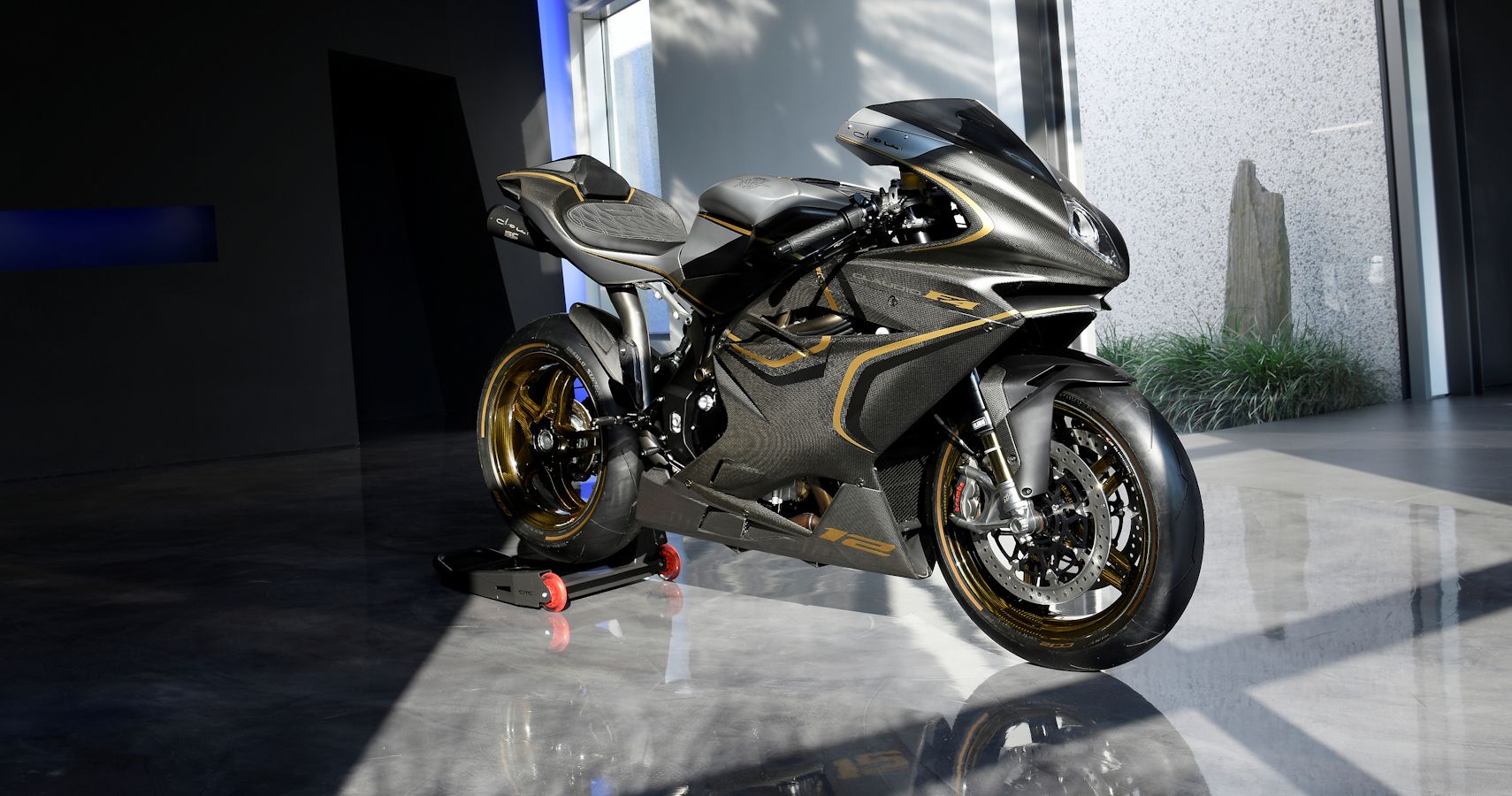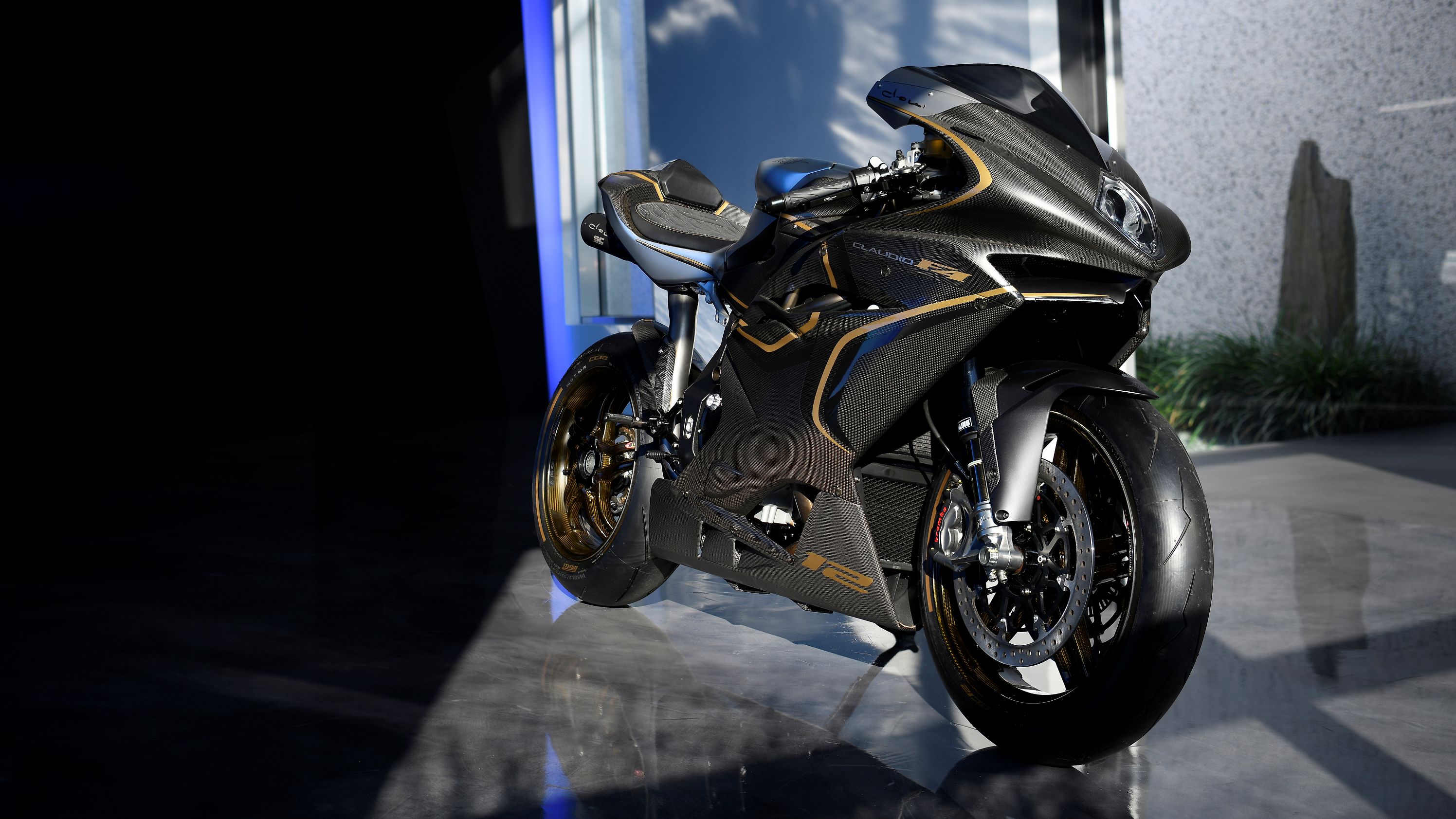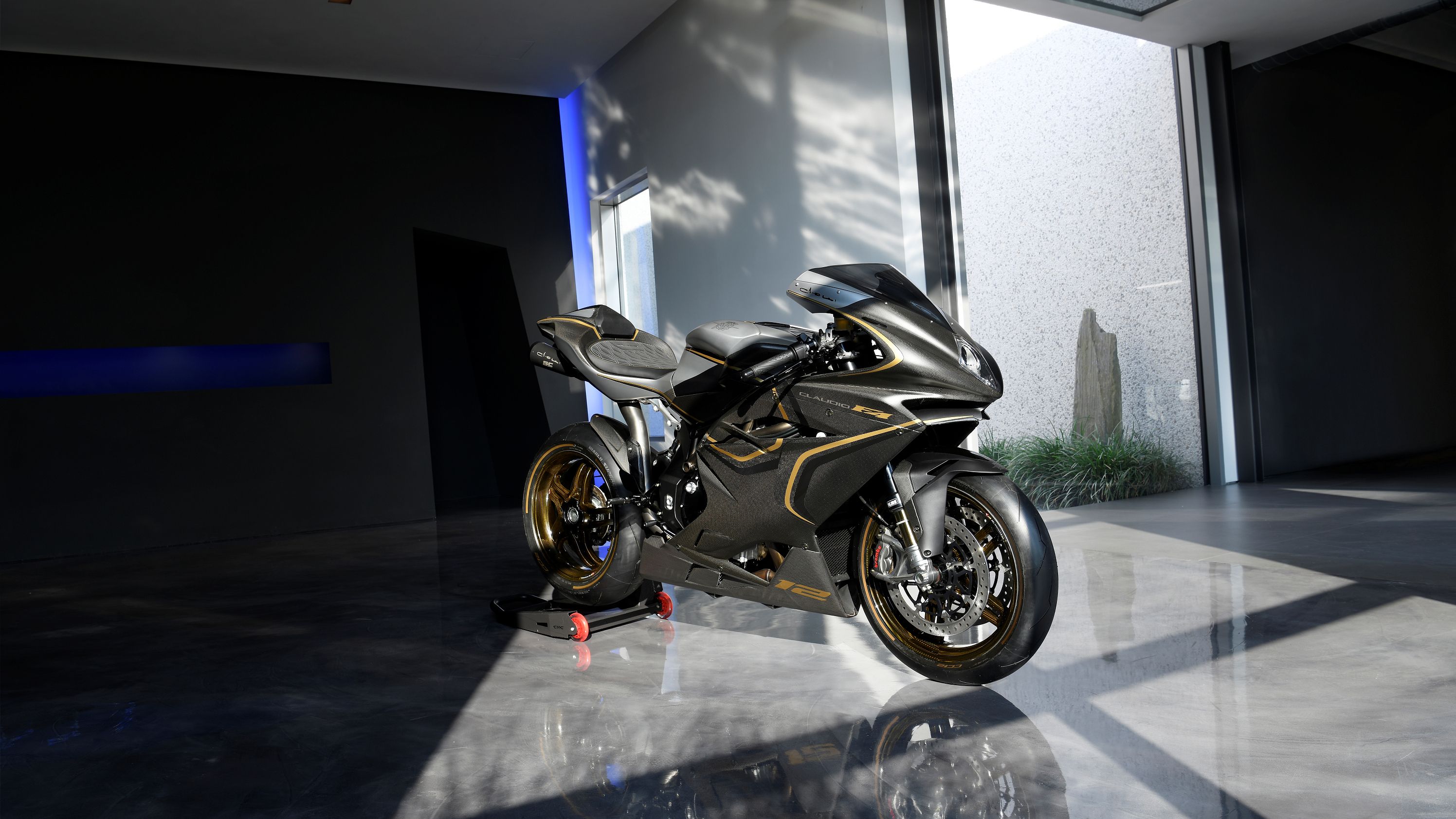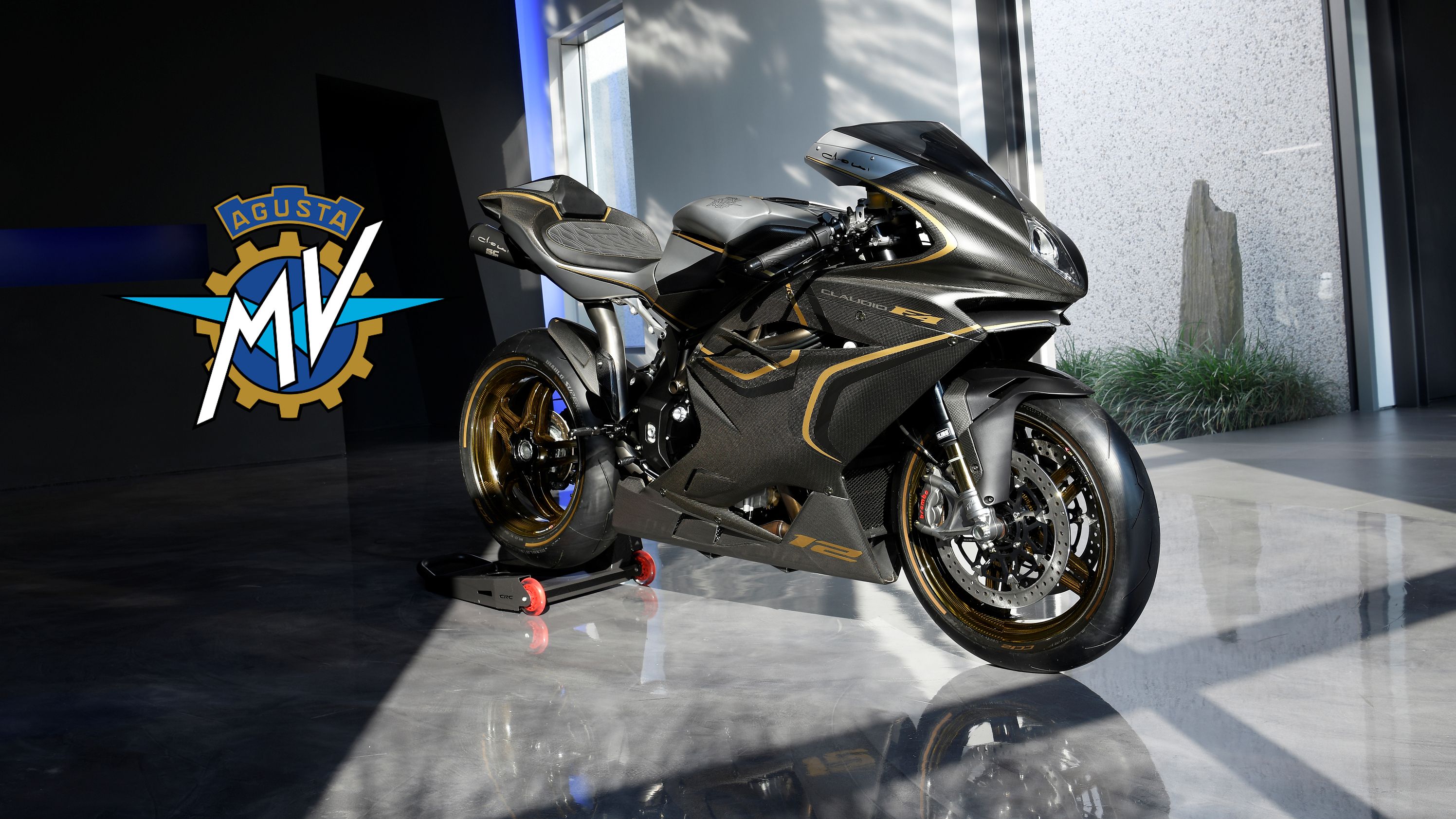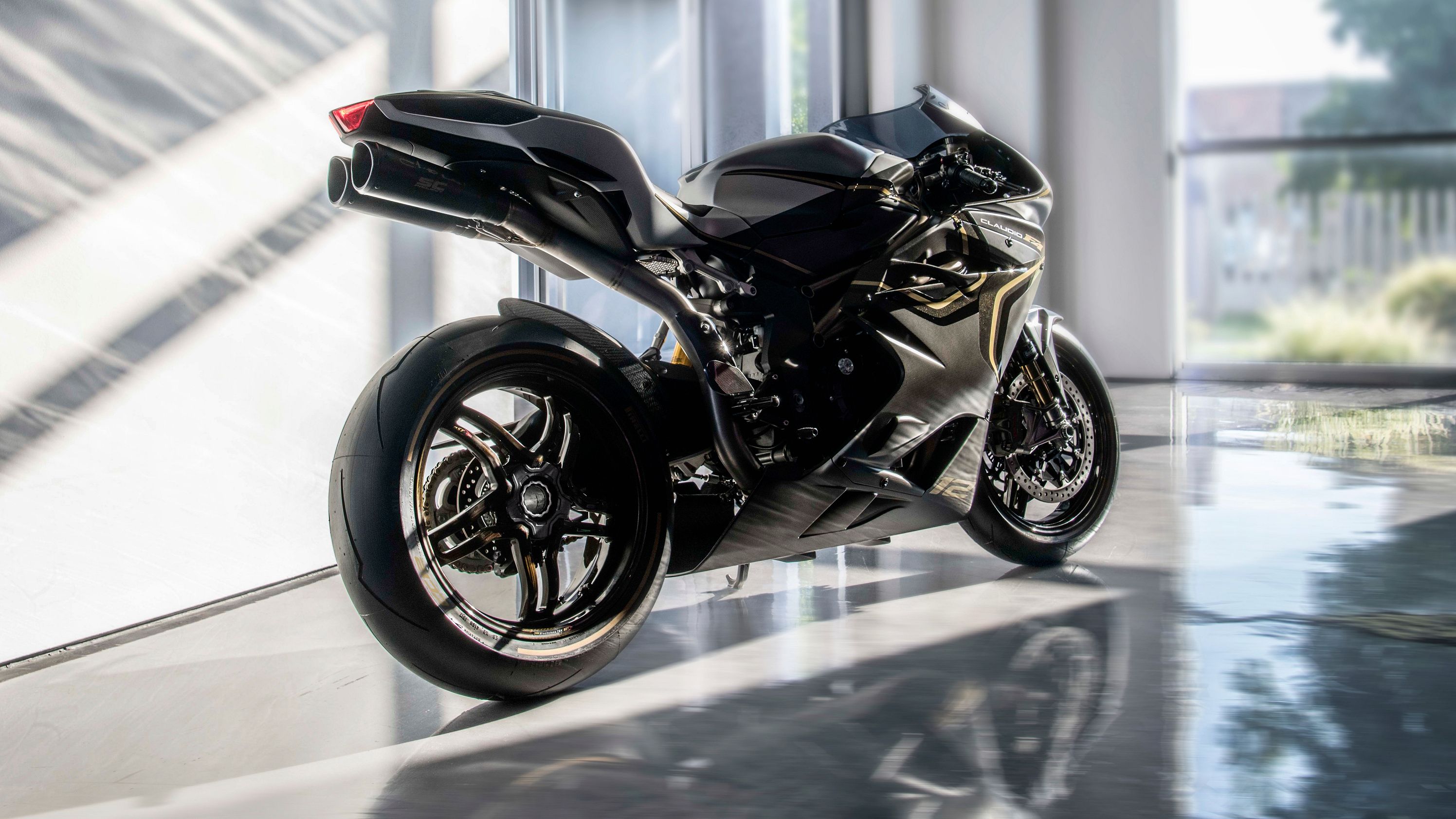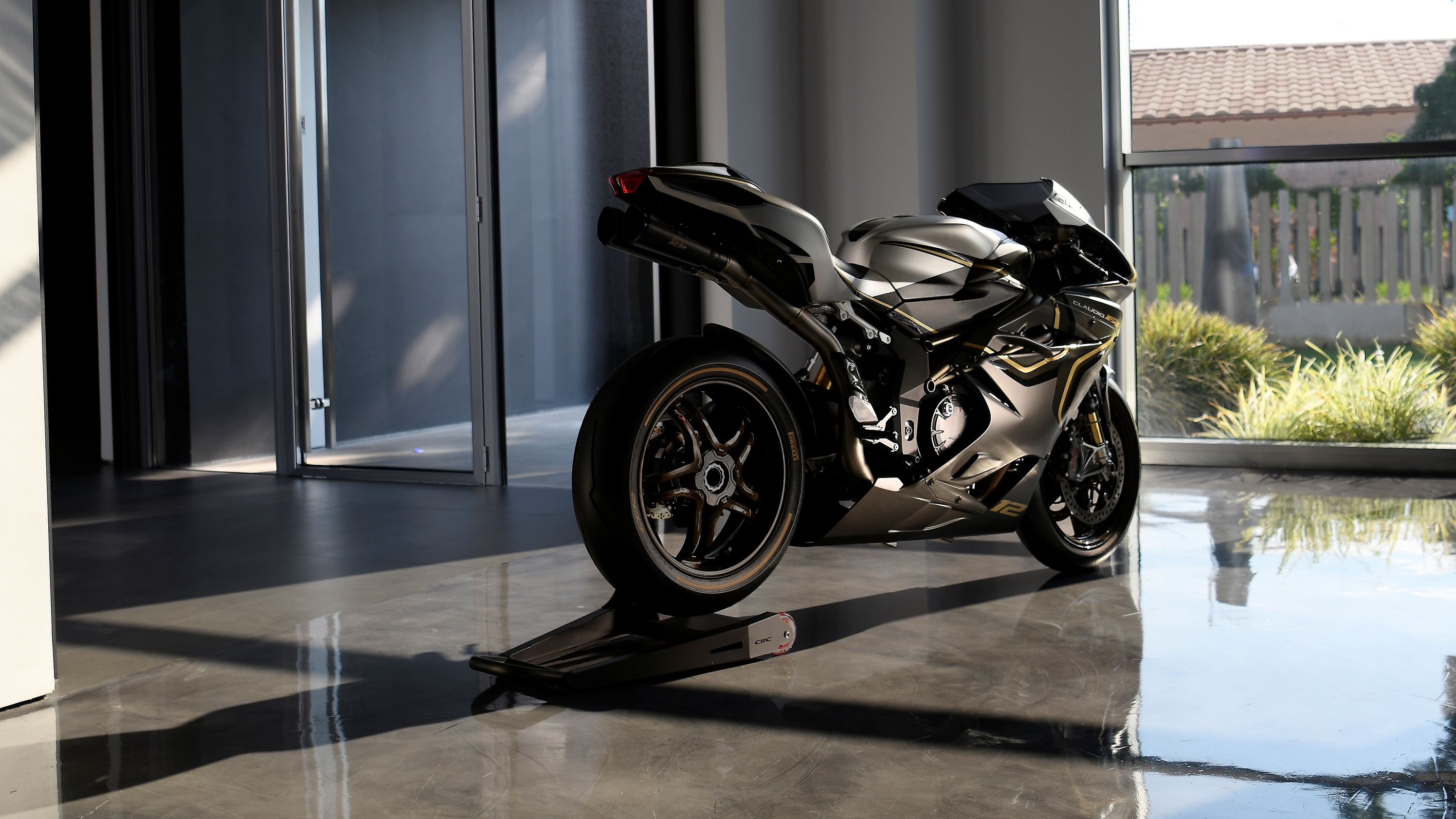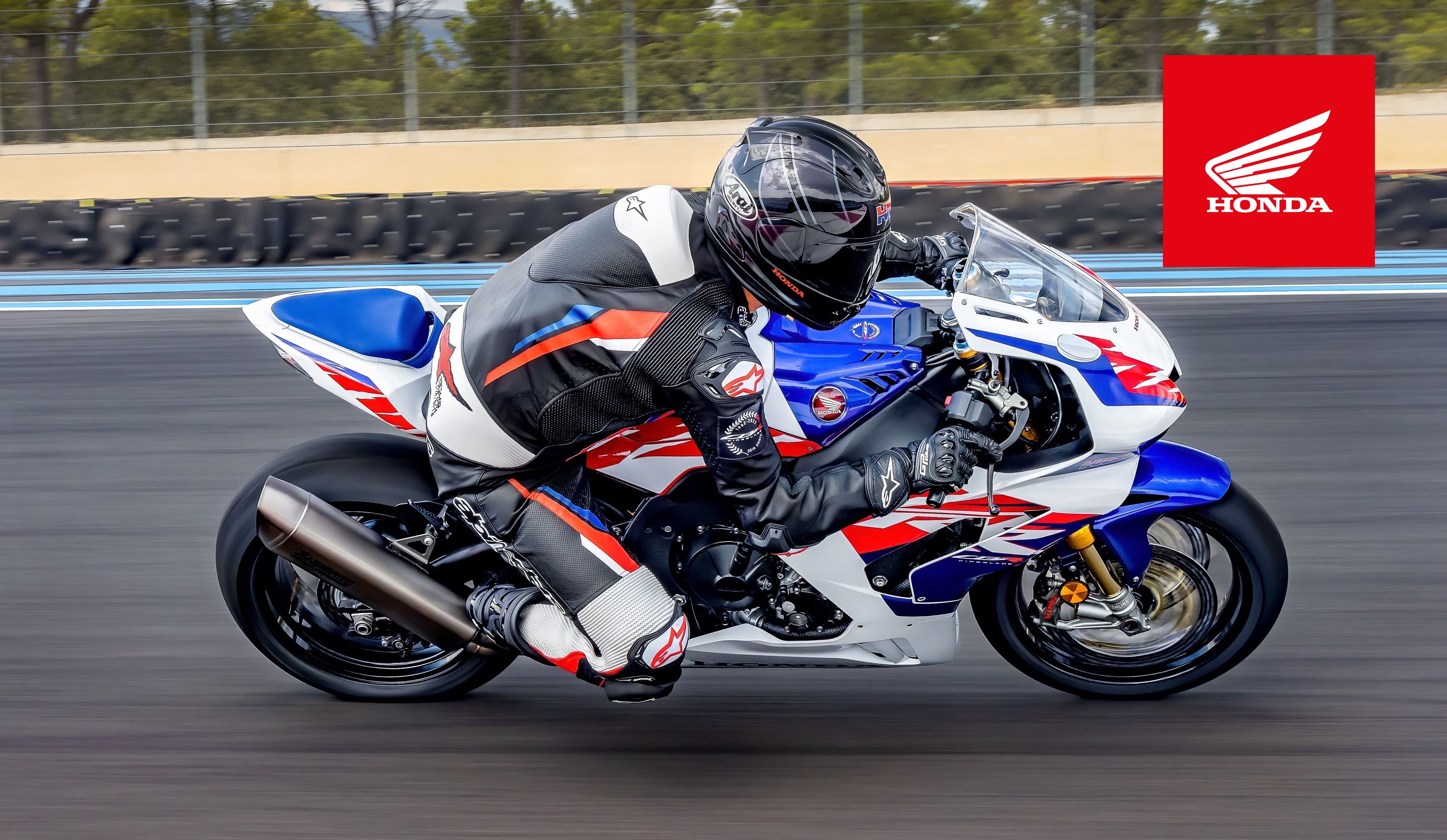MV Agusta last hit its race-tastic F4 series with a major update back in 2013, and it still serves as the “current” model through 2019, culminating with the second generation F4 “Claudio.” A new frame carries a new, short-stroke mill with new throttle-bodies and a new electronics suite to help you keep it rubber-side down, even under racetrack conditions. New cast wheels and LED lighting completes the package.
MV-Agusta F4
- Model: MV Agusta
- Engine: 998 cc In-line four
- Power Output: 205.00 HP
- Torque: 84.8 LB-FT
- Transmission: 6-speed Constant mesh
- Driveline: Chain
- Intoxicating Engine Note
- Exotic Styling with Outstanding Build Quality
- Fun to Ride
- Premium Pricing
- Harsh Ride
- Procuring Spare Parts
2019 MV Agusta F4 Performance and Capability
The factory borrowed from its own F4R and F4RR platforms for the engine that pushes this latest generation of the F4 family down the road. A 79 mm bore and short, 50.9 mm stroke gives it a 998 cc total displacement with a nuclear-hot 13.4-to-1 compression ratio. This comes with a very expensive taste in fuels to prevent pre-ignition/detonation/run-on.
The MV Agusta F4 Claudio produces 205 horsepower and 84.8 pound-feet of torque. Radial valves – four per cylinder – work in a rare hemispherical combustion chamber with dual over-head cams to time them. Naturally it's water cooled for the thermal safety and stability that brings to the table. The super-strong titanium connecting rods are quite light. This causes a reduction in the reciprocating mass in the bottom end for better throttle response and safer revs in the upper register.
Power flows through a slipper-type clutch that adds some anti-hop protection to the package. A six-speed transmission with a chain-type final drive that, when all factors in, turns out an MV Agusta F4 top speed of 187.7 mph (302 km/h) to place it deep in stupidfast territory.
Emissions were good when it was new. However, the Euro 3 rating may cause you some trouble in some areas with strict regulations in place. Engine control falls to the Eldor EM2.0. This latest version carries beefed-up throttle bodies with dual injectors for excellent atomization and flame-front propagation. MV Agusta's Motor and Vehicle Integrated Control System brings all the electronic ride-control goodies to the table to help you keep all those ponies under control.
|
Engine & Drivetrain |
|
|
Engine |
Liquid-cooled, In-line four, four-stroke, four valves/cylinder, DOHC, twin cam |
|
Displacement |
998 cc(60.90 Cubic inches) |
|
Bore X Stroke |
79.0 mm X 50.9 mm (3.1 inches X 2.0 inches) |
|
Compression Ratio |
13.4:1 |
|
Maximum power |
205.00 HP (149.6 kW)) @ 13,450 RPM |
|
Maximum torque |
84.8 LB-FT (115.00 Nm) @ 9,300 RPM |
|
Fuel system |
Injection |
|
Gearbox |
6-speed Constant mesh |
|
Final drive |
Chain |
|
Clutch |
Wet, multi-disc with back torque limiting device |
This Fully Loaded 2018 MV Agusta F3 RC Is A Rampant Supersport Waiting To Amp Up Your Garage
Design
Sleek, sexy, and aggressive, the F4 Claudio carries itself with all the poise and panache we have come to expect from bikes with an Italian pedigree. Wind tunnel-tested, carbon-fiber bodywork flows over the bike from a pointy nose, back to an also-pointy tail. The cyclops headlight emitter rides atop said point. Just below at the chin, intake ports deliver ram-effect air to the intake tract for a slick little boost to volumetric efficiency.Spoiler alert: you have to get up to around 100 mph to garner any real performance boost, so this is really a track-only feature unless you have access to the Autobahn or a track.
Out back under the pointy tail and taillight housing, a revised exhaust is well out of the way. Dead-short, clip-on bars define the cockpit. Rather high, jockey-mount footpegs and controls facilitate deep cornering and the dragging of body parts if you have the nerve for it. A quilted saddle cradles the pilot's derrière with a generous buttstop created by the rise to the decidedly non-pillion platform.
|
MV Agusta F4 Claudio Specs |
|
|
Wheelbase |
56.3 inches (1,430 mm) |
|
Length |
83.3 inches (2,115 mm) |
|
Width |
29.5 inches (750 mm) |
|
Seat Height |
32.7 inches (830 mm) |
|
Ground Clearance |
4.5 inches (115 mm) |
|
Dry Weight |
403.4 pounds (183.0 kg) |
|
Power Output Ratio |
1.1202 HP/kg |
|
Fuel Capacity |
4.49 gallons (17.00 liters) |
|
Top Speed |
187.7 mph (302.0 km/h) |
Chassis
Tubular chrome-molybdenum steel members make up the Trellis-type frame on the F4 Claudio with a single-side swingarm to complete the structure. Cast, 17-inch wheels round out the rolling chassis in a 120/70 ahead of a 200/55. As you'd expect, the rubber comes with a “Z” speed rating, which is as fast as it gets for speed ratings.
The factory doesn't declare a rake angle but does claim four inches of trail with a 56.3-inch wheelbase. I estimate the rake around 24 degrees from the vertical, considering the sporty nature of the bike.
USD Öhlins forks float the front end and split the damping duties. The left tube manages compression damping and the right handles rebound damping, both of which are adjustable. Same with the piggyback Öhlins TTX36 twin-tube shock out back with 4.7-inch suspension travel at both ends. Dual, 320 mm discs work with four-bore Brembo binders, opposite a 210 mm disc, with ABS protection all around.
|
Chassis & Suspension |
|
|
Frame |
CrMo Steel Tubular Trellis |
|
Front Suspension/ Travel |
Öhlins USD front fork, NIX 30 type with TIN coating on inner tubes, left compression and right rebound manual adjustment, top out spring/ 4.7 inches (120 mm) |
|
Rear Suspension/ Travel |
Öhlins progressive, TTX36 twin tube rear shock absorber with piggyback reservoir, compression and rebound adjusted with anodized aluminum adjustment knobs/ 4.7 inches (120 mm) |
|
Trail |
4.0 inches (100 mm) |
|
Wheels |
Black, 10-spoke |
|
Front Tires |
120/70-ZR17 |
|
Rear Tires |
200/55-ZR17 |
|
Front brakes |
Dual 320 mm disc, Brembo radial-type, single-piece with 4 pistons, ABS |
|
Rear brakes |
Single 210 mm disc, ABS |
2019 MV Agusta F4 Price and Availability
As a limited-edition offering, there are only 100 of the F4 Claudio worldwide, and they'll be second-hand units at the very least by this point. The MV Agusta F4 Claudio costs £10,600, the average used price.
Competitors
One of the downsides of the F4 was the competition that beat them soundly on paper as far as power, speed, and electronics. The Japanese sector in particular had plenty of platforms ready to meet the Italian toe-to-toe, such as Honda's CBR1000RR “Fireblade” and Yamaha's R1. But the Germans and Brits posed a threat much closer to home with the BMW HP4 and Triumph Speed Triple, respectively. However, it's hard to put a price on a limited-edition model, especially one with so few models ever minted. I expect that average price may be a little on the low side at the end of the day.
He Said
“Some consider the F4 a tad unrefined for the time, as evidenced by the power numbers that, on average, leave a little to be desired. I expect the fact that it's such a rare machine to attract collectors. Has anyone called Jay Leno yet?”
She Said
My wife and fellow motorcycle writer, [Allyn Hinton->aut72625], says, “When comparing the MV Agusta F3 vs the F4, I find the rider triangle on the F4 more aggressive. If you're looking at both and considering a purchase for your daily commute, I'd go F3. If comfort is high on the list of priorities, you might even look at a Brutale or the Turismo for that upright triangle that says commute all day long."

